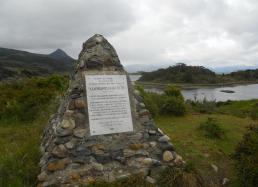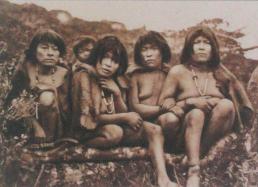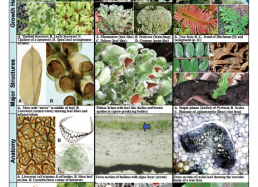Cape Horn History
We're all familiar with some of the early expeditions to Cape Horn by Magellan, Drake, Hooker, and Cook. But did you know that relatively few of these adventurers spent much time exploring the area, due to rough seas, drifting icebergs, inadequate scientific staff, and hostile indigenous peoples? Surprisingly, only one expedition since the 1880s had collected more than a smattering of bryophytes, the most prolific plants to be found in the region.
Then in 2000, Chile established the Omora Ethnobotanical Park in an attempt to preserve both the world's southernmost human culture—the indigenous Yaghan—and the planet's southernmost forests. Early efforts to inventory species in the park focused on liverworts, hornworts, and mosses, based on advice from the Yaghan, who identified these plants as the most diverse and important in the ecosystem.
Tourism with Hand Lens
In 2005, when the Cape Horn region gained Biosphere Reserve status, the Omora Foundation joined forces with UNESCO to design and implement strategies aimed at conserving the area's unique biocultural diversity. Continuing discoveries of new bryophyte species revealed an unusual challenge: how to communicate to decision makers and the general public the beauty, rarity, and value of plants so small that they can easily be overlooked by the naked eye.
Thus launched the "Tourism with A Hand Lens" campaign, where scientists, graduate students, and artists worked with government authorities, journalists, schoolteachers, ecotourism groups, and members of the local community to help them explore Cape Horn's "miniature forests"—with the help of a magnifying glass. This new type of tourism has enhanced understanding and appreciation of the unique habitat, while at the same time providing a sustainable source of income for local communities in the Reserve.
Capacity Building in Chile
As ongoing joint New York Botanical Garden and Field Museum expeditions visit the many largely unexplored islands in the Cape Horn Archipelago, team members will continue to create a comprehensive catalog of their finds. Determining species' distribution and abundance patterns will also help in the completion of a critical environmental impact study that will assist the Cape Horn regional planning process in evaluating requests for development from tourism, fishing, and logging industries.
Through fieldwork and education workshops for Chilean students at the Universidad de Magallanes and Universidad de Concepción, the team also hopes to build a local body of experts who will continue to explore, protect, and interpret the Cape Horn ecosystem. The Garden of Mosses currently under construction at the Omora Ethnobotanical Park will become an outdoor education center where graduate students will help tour groups and other interested visitors learn about the region's resources and rich history.




